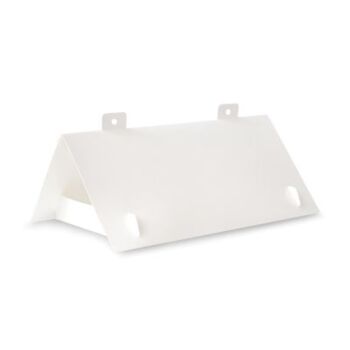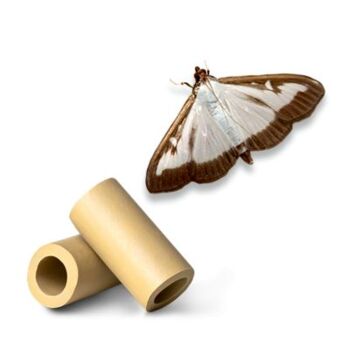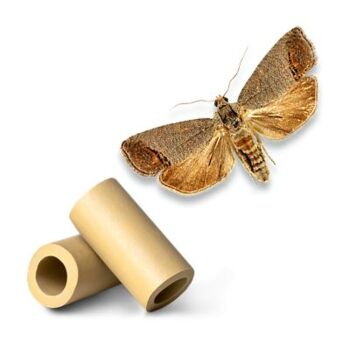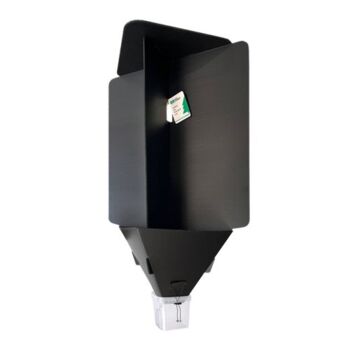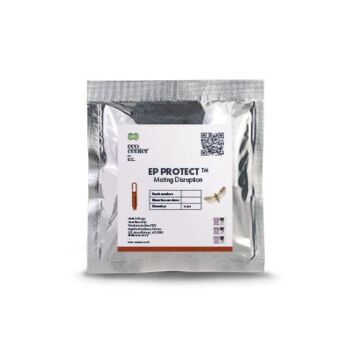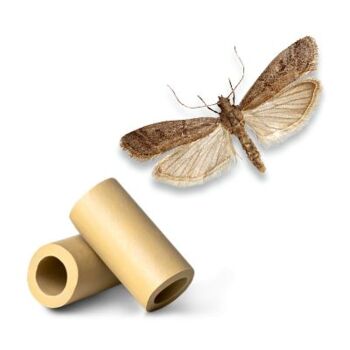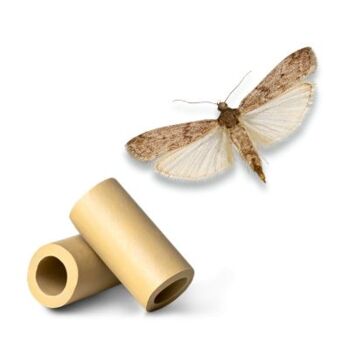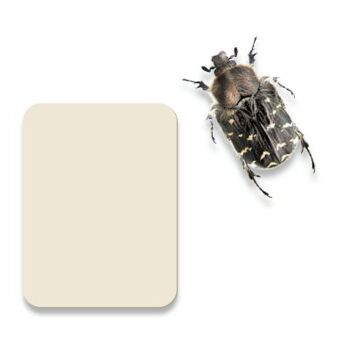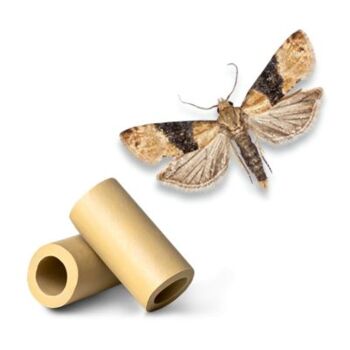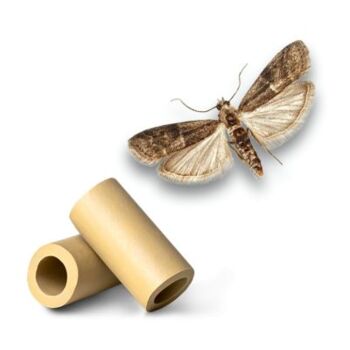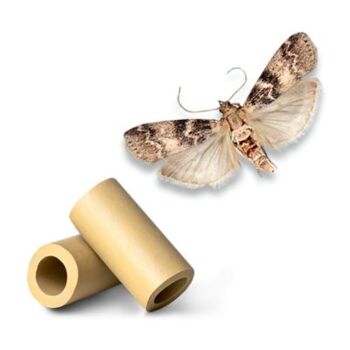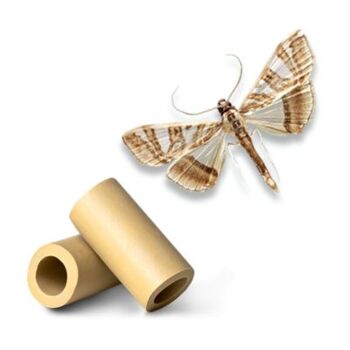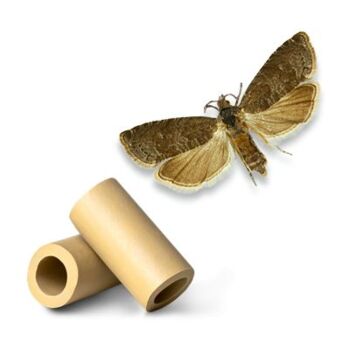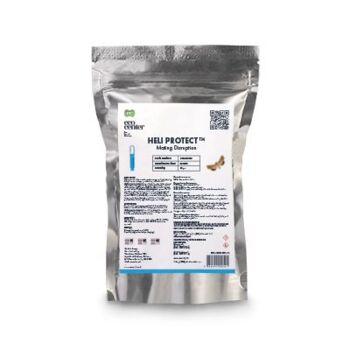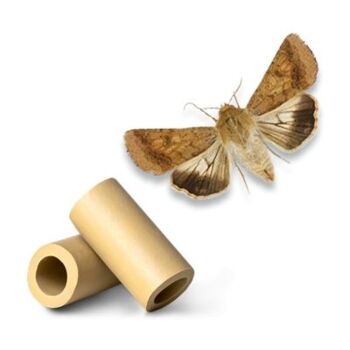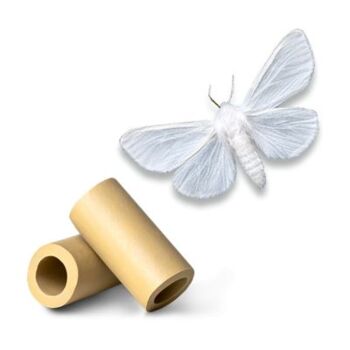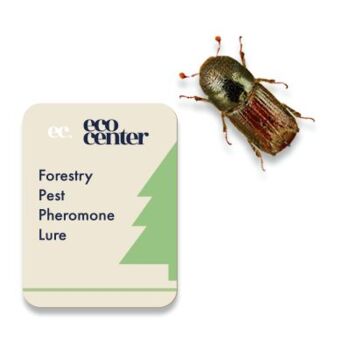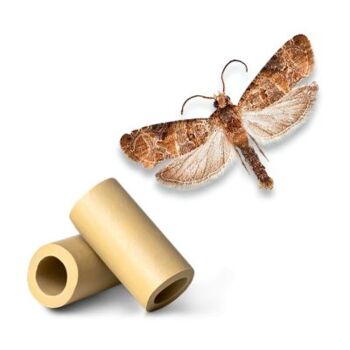Cryptophlebia (Thaumatotibia) leucotreta Delta Plastic Trap kit
Cryptophlebia (Thaumatotibia) leucotreta Delta Plastic Trap kit is suitable for trapping and monitoring false codling moth, in a cost-effective and environmentally friendly way, allowing users to assess risks to crop and need for supplementary pest management actions.
This kit includes Delta Plastic Trap, adhesive insert, wire hangers and Cryptophlebia (Thaumatotibia) leucotreta lure.
Replacement lures can be bought separately.
The lures in the traps must be replaced every 4-6 weeks to keep attraction rates high.
Cydalima perspectalis lures
Cydalima perspectalis lure is a component of an insect trapping device, that uses pheromones to lure box tree moth into a trap.
The lure, in the form of the rubber dispenser, that contains female pheromone of box tree moth, must be placed in a Delta Plastic Trap to be fully functional (traps can be bought separately or in kits with lures).
Using such pheromone lures is an economic, environmentally sound approach to either monitor or trap these pests.
The lures in the traps must be replaced every 4-6 weeks to keep attraction rates high.
Shelf life - up to 2 years (optimum conditions).
Cydia pomonella lures
Cydia pomonella lure is a component of an insect trapping device, that uses pheromones to lure codling moth into a trap.
The lure, in the form of the rubber dispenser, that contains female pheromone of codling moth, must be placed in a Delta Plastic Trap to be fully functional (traps can be bought separately or in kits with lures).
Using such pheromone lures is an economic, environmentally sound approach to either monitor or trap these pests.
The lures in the traps must be replaced every 4-6 weeks to keep attraction rates high.
Shelf life - up to 2 years (optimum conditions).
EC Forest Trap Anoplophora glabripennis Kit
The EC Forest Trap Anoplophora glabripennis Kit provides a cost-effective and environmentally friendly solution for trapping and monitoring asian long-horned beetle. By using this kit, users can accurately assess the risk of pest infestation and determine the need for further pest management actions.
The kit includes the EC Forest Trap and an Anoplophora glabripennis lure, offering a comprehensive approach to effective pest control.
Both traps and lures can also be purchased separately. Crafted from durable recycled plastic, the EC Forest trap is easy to assemble and designed for user convenience, making it a practical choice for any user.
The lures in the traps must be replaced every 8-10 weeks to keep attraction rates high.
Ephestia elutella lures
Ephestia elutella lure is a component of an insect trapping device, that uses pheromones to lure cacao moth/tobacco moth into a trap.
The lure, in the form of the rubber dispenser, that contains female pheromone of cacao moth/tobacco moth, must be placed in a Delta Plastic Trap to be fully functional (traps can be bought separately or in kits with lures).
Using such pheromone lures is an economic, environmentally sound approach to either monitor or trap these pests.
The lures in the traps must be replaced every 4-6 weeks to keep attraction rates high.
Shelf life - up to 2 years (optimum conditions).
Ephestia kuehniella lures
Ephestia kuehniella lure is a component of an insect trapping device, that uses pheromones to lure Mediterranean flour moth into a trap.
The lure, in the form of the rubber dispenser, that contains female pheromone of Mediterranean flour moth, must be placed in a Delta Plastic Trap to be fully functional (traps can be bought separately or in kits with lures).
Using such pheromone lures is an economic, environmentally sound approach to either monitor or trap these pests.
The lures in the traps must be replaced every 4-6 weeks to keep attraction rates high.
Shelf life - up to 2 years (optimum conditions).
Epicometis (tropinota) hirta lures
Epicometis (tropinota) hirta lure is a component of an insect trapping device, that uses to lure blossom feeder into a trap.
The lure, in the form of the cellulose dispenser, that contains attractant for blossom feeder, must be placed in a EC Field trap to be fully functional (traps can be bought separately or in kits with lures).
Using such lures is an economic, environmentally sound approach to either monitor or trap these pests.
The lures in the traps must be replaced every 3-5 weeks to keep attraction rates high.
Shelf life - up to 2 years (optimum conditions).
Eupoecilia ambiguella lures
Eupoecilia ambiguella lure is a component of an insect trapping device, that uses pheromones to lure vine moth into a trap.
The lure, in the form of the rubber dispenser, that contains female pheromone of vine moth, must be placed in a Delta Plastic Trap to be fully functional (traps can be bought separately or in kits with lures).
Using such pheromone lures is an economic, environmentally sound approach to either monitor or trap these pests.
The lures in the traps must be replaced every 4-6 weeks to keep attraction rates high.
Shelf life - up to 2 years (optimum conditions).
Euzophera bigella lures
Euzophera bigella lure is a component of an insect trapping device, that uses pheromones to lure quince moth into a trap.
The lure, in the form of the rubber dispenser, that contains female pheromone of quince moth, must be placed in a Delta Plastic Trap to be fully functional (traps can be bought separately or in kits with lures).
Using such pheromone lures is an economic, environmentally sound approach to either monitor or trap these pests.
The lures in the traps must be replaced every 4-6 weeks to keep attraction rates high.
Shelf life - up to 2 years (optimum conditions).
Euzophera pinguis lures
Euzophera pinguis lure is a component of an insect trapping device, that uses pheromones to lure tabby knot-horn moth into a trap.
The lure, in the form of the rubber dispenser, that contains female pheromone of tabby knot-horn moth, must be placed in a Delta Plastic Trap to be fully functional (traps can be bought separately or in kits with lures).
Using such pheromone lures is an economic, environmentally sound approach to either monitor or trap these pests.
The lures in the traps must be replaced every 4-6 weeks to keep attraction rates high.
Shelf life - up to 2 years (optimum conditions).
Glyphodes (Diaphania) pyloalis lures
Glyphodes (Diaphania) pyloalis lure is a component of an insect trapping device, that uses pheromones to lure mulberry moth into a trap.
The lure, in the form of the rubber dispenser, that contains female pheromone of mulberry moth, must be placed in a Delta Plastic Trap to be fully functional (traps can be bought separately or in kits with lures).
Using such pheromone lures is an economic, environmentally sound approach to either monitor or trap these pests.
The lures in the traps must be replaced every 4-6 weeks to keep attraction rates high.
Shelf life - up to 2 years (optimum conditions).
Grapholita funebrana/ Grapholita molesta lures
Grapholita funebrana/ Grapholita molesta lure is a component of an insect trapping device, that uses pheromones to lure plum fruit moth/ oriental fruit moth into a trap.
The lure, in the form of the rubber dispenser, that contains female pheromone of plum fruit moth/ oriental fruit moth, must be placed in a Delta Plastic Trap to be fully functional (traps can be bought separately or in kits with lures).
Using such pheromone lures is an economic, environmentally sound approach to either monitor or trap these pests.
The lures in the traps must be replaced every 4-6 weeks to keep attraction rates high.
Shelf life - up to 2 years (optimum conditions).
Helicoverpa armigera lures
Helicoverpa armigera lure is a component of an insect trapping device, that uses pheromones to lure cotton bollworm into a trap.
The lure, in the form of the rubber dispenser, that contains female pheromone of cotton bollworm, must be placed in a Delta Plastic Trap to be fully functional (traps can be bought separately or in kits with lures).
Using such pheromone lures is an economic, environmentally sound approach to either monitor or trap these pests.
The lures in the traps must be replaced every 4-6 weeks to keep attraction rates high.
Shelf life - up to 2 years (optimum conditions).
Hyphantria cunea lures
Hyphantria cunea lure is a component of an insect trapping device, that uses pheromones to lure fall webworm into a trap.
The lure, in the form of the rubber dispenser, that contains female pheromone of fall webworm, must be placed in a Delta Plastic Trap to be fully functional (traps can be bought separately or in kits with lures).
Using such pheromone lures is an economic, environmentally sound approach to either monitor or trap these pests.
The lures in the traps must be replaced every 6-7 weeks to keep attraction rates high.
Shelf life - up to 2 years (optimum conditions).
Ips Spp. lures
Ips spp. lure is a component of an insect trapping device, that uses pheromones to lure bark beetles into a trap.
The lure, in the form of the cellulose dispenser, that contains pheromone of bark beetles, must be placed in a EC Forest trap to be fully functional (traps can be bought separately or in kits with lures).
Using such pheromone lures is an economic, environmentally sound approach to either monitor or trap these pests.
The lures in the traps must be replaced every 8-10 weeks to keep attraction rates high.
Shelf life - up to 2 years (optimum conditions).
Lobesia botrana lures
Lobesia botrana lure is a component of an insect trapping device, that uses pheromones to lure European grapevine moth into a trap.
The lure, in the form of the rubber dispenser, that contains female pheromone of European grapevine moth, must be placed in a Delta Plastic Trap to be fully functional (traps can be bought separately or in kits with lures).
Using such pheromone lures is an economic, environmentally sound approach to either monitor or trap these pests.
The lures in the traps must be replaced every 4-6 weeks to keep attraction rates high.
Shelf life - up to 2 years (optimum conditions).
Lymantria dispar lures
Lymantria dispar lure is a component of an insect trapping device, that uses pheromones to lure spongy moth into a trap.
The lure, in the form of the rubber dispenser, that contains female pheromone of spongy moth, must be placed in a Delta Plastic Trap to be fully functional (traps can be bought separately or in kits with lures).
Using such pheromone lures is an economic, environmentally sound approach to either monitor or trap these pests.
The lures in the traps must be replaced every 4-6 weeks to keep attraction rates high.
Shelf life - up to 2 years (optimum conditions).
